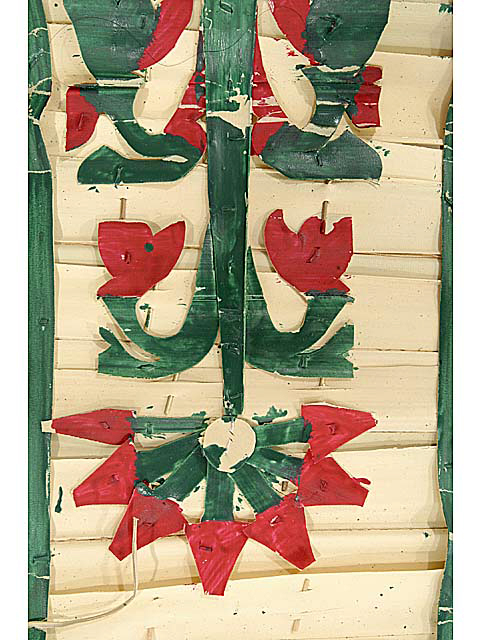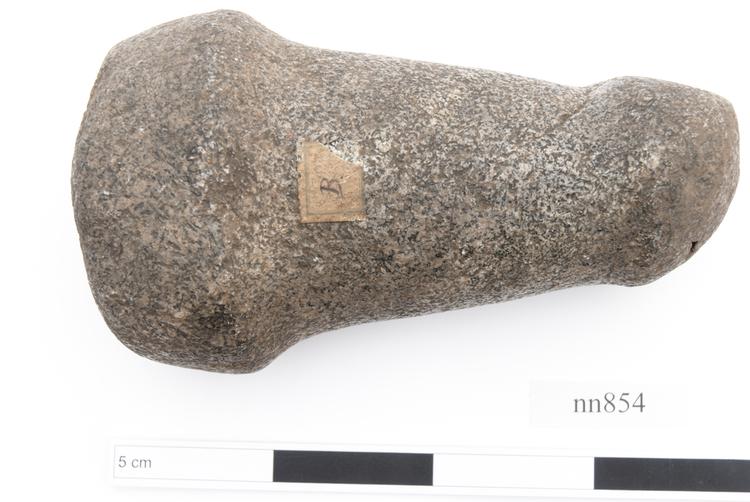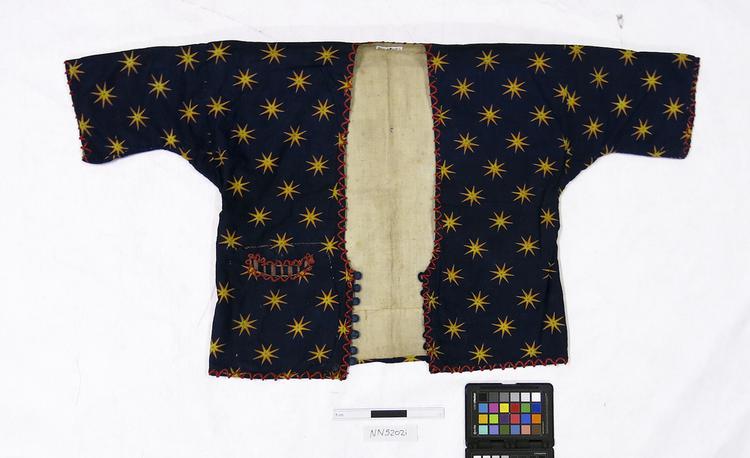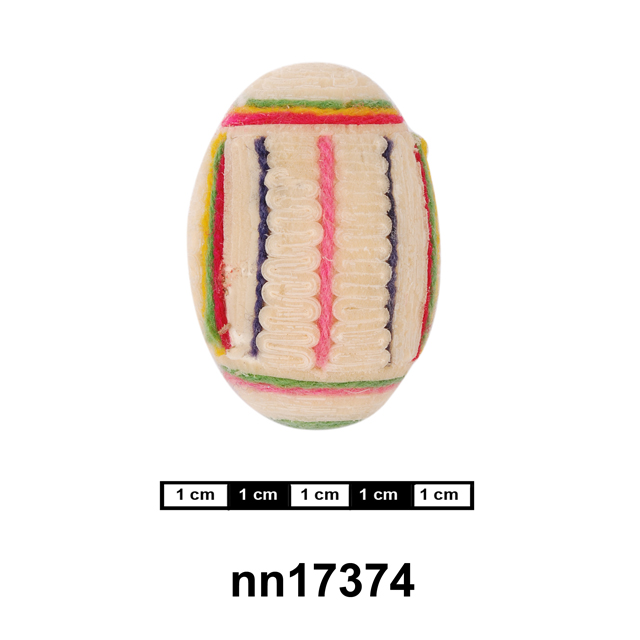Spear, human figure design.
Decoratively Bound Barbed War-Spear, Probably Bougainville Island, Solomon Islands, Central Melanesia. This war-spear from the Solomon Islands embodies several of the best aesthetic elements of island Melanesian art, and several technical or stylistic aspects of spear-making in the central Pacific. A carefully selected, meticulously-planed and finely-sanded shaft of heavy Casuarina wood is augmented with several rows of backwards-facing barbs, each formed from the wingbone of the Flying Fox (Pteropus spp.). Each barb is tightly bound to the head against a small fillet of wood with finely plaited cordage of coconut husk fibre. Below this binding are carved two abstract human figures back-to-back, which mark the most westerly appearance of a habit of carving human faces on the necks or heads of weapons that occurred in most of the Pacific societies east from here. The spear’s most striking artistic feature is its finely-woven sheath of split orchid stem fibres. These fibres are yellow in their natural state, but turn bright red when boiled in a bamboo tube filled with water. Their finely woven geometric patterns are found on many Solomon Islands artworks as both decoration, and as a functional binding, but this long war-spear represents one of the largest canvases available. Such work was a speciality of Bougainville people, and it is likely that this spear originated there. Wood, bone, orchid stem, coconut fibre, mineral pigment. Formerly in the private collection of Mr J. Denny.
fighting






